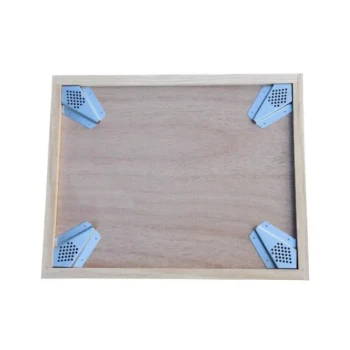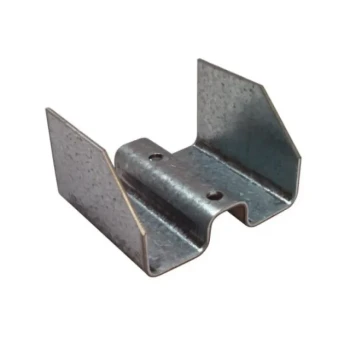At its core, extracting sugar syrup remaining in combs with your honey crop is an act of contamination. This practice adulterates the final product, rendering it non-compliant with the legal and commercial definition of pure honey.
The fundamental principle is that honey must be a purely natural product derived from floral nectar gathered and processed by bees. Introducing sugar syrup from feeding, whether intentionally or not, fundamentally changes the product's origin and disqualifies it from being legally sold as honey.
The Legal and Natural Definition of Honey
To understand why this is a critical rule, we must first be clear on what honey is. Food standard agencies worldwide have a specific and protected definition for it.
The Origin Rule: Nectar, Not Sugar
Pure honey is defined by its origin: plant nectar or secretions of living parts of plants. Bees forage for these natural sweet liquids, carry them back to the hive, and begin the intricate process of creating honey.
Feeding bees sugar syrup is a common and necessary management practice, but it is fundamentally different. The syrup is a human-made food source, not a natural one foraged by the bees.
The Problem of Adulteration
When a beekeeper extracts frames containing stored sugar syrup along with frames of pure honey, the resulting product is a mixture. This is considered adulteration.
Even if unintentional, the act of blending a non-nectar-based sugar into the final product means it can no longer be legally labeled or sold as "pure honey." It compromises the integrity of the harvest.
Understanding the Consequences
Mixing sugar syrup with your honey crop carries significant risks that go beyond simple definitions. These consequences can impact your product quality, your reputation, and your legal standing.
Dilution of Quality
Honey is prized for its complex flavor profiles, aromas, and health properties, which come from the hundreds of different compounds found in floral nectar.
Sugar syrup, typically a simple solution of sucrose, lacks this complexity. Mixing it in dilutes the unique taste and aroma of the natural honey, resulting in a bland and inferior product.
Violation of Food Standards
Consumer protection laws are in place to ensure food authenticity. Products sold as "honey" are often subject to laboratory analysis to detect adulteration.
These tests can easily identify the presence of sugars like cane or corn syrup (C4 sugars) that are not naturally present in honey. A failed test confirms the product is adulterated.
Damage to Reputation
For any beekeeper, from a small-scale hobbyist to a commercial producer, reputation is paramount. Selling an adulterated product, even by accident, can permanently damage the trust you have built with customers.
Consumers pay a premium for pure, local honey. Discovering it has been diluted with simple sugar syrup is a violation of that trust.
Best Practices for Prevention
The solution is to maintain a clear separation between bee feeding and honey production. This requires disciplined hive management.
Isolate Honey Supers
The golden rule is to never have honey supers on the hive during periods of feeding. Honey supers are meant exclusively for the storage of surplus honey intended for harvest.
Harvest Before You Feed
Always remove the frames you intend to harvest before you begin any supplemental feeding, such as preparing the colony for winter. This creates a clean break between production and feeding.
Manage Your Frames
If you have frames with cured sugar syrup that you want the bees to use, keep them in the brood boxes for the colony's own consumption. Do not move them into a honey super to be extracted later.
Making the Right Choice for Your Goal
Your approach must be guided by the goal of producing an authentic, high-quality product.
- If your primary focus is producing pure, legal honey: You must maintain a strict separation and never extract combs that contain stored sugar syrup.
- If your primary focus is supporting your colony through a nectar dearth: Use feeding as a tool for bee health, but ensure all honey supers are removed from the hive first.
Ultimately, your role as a beekeeper is to be a steward of a remarkable natural product, and protecting its purity is your foremost responsibility.
Summary Table:
| Action | Consequence | Best Practice |
|---|---|---|
| Extract sugar syrup with honey | Adulterates product; not legally pure honey | Never have honey supers on during feeding |
| Mix sugar syrup with honey crop | Dilutes flavor, aroma, and health properties | Harvest all honey supers before starting to feed |
| Sell adulterated honey | Violates food standards; risks failed lab tests | Keep frames with syrup in brood boxes for bee consumption only |
| Damage to beekeeper reputation | Loss of customer trust and premium pricing | Maintain strict separation between feeding and production |
Produce pure, high-quality honey with confidence. Proper hive management is essential for protecting your harvest's integrity. HONESTBEE supplies commercial apiaries and beekeeping equipment distributors with the reliable tools needed for best practices. From durable honey supers to precise extraction equipment, our wholesale-focused operations support your commitment to quality. Contact HONESTBEE today to equip your operation for success.
Related Products
- 10L Stainless Steel Electric Honey Press Machine
- Stainless Steel Honey Press Wax Press with Tank
- Stainless Steel Manual Honey Press with Guard for Pressing Honey and Wax
- Electric Flatting and Embossing Machine with Tray for Beekeeping
- Honey Wax Separating Wax Press with Metal Screw Wax Separator Machine
People Also Ask
- Why are honey presses indispensable for larger beekeeping operations? Scale Your Harvest with High-Volume Processing
- What voltage options are available for stainless steel screw honey pumps? Choose the Right Power for Your Scale
- What are the benefits of the screw design in a stainless steel honey pump? Preserve Honey Quality and Integrity
- What are the key features of a honey press? Maximize Yield with Durable, Efficient Extraction
- What is a honey press and what is its purpose? Maximize Honey & Wax Yield from Your Hives



















